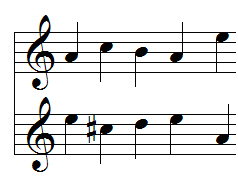Rachmaninov: Rhapsody on a Theme by Paganini
While we’re on the subject, let’s go ahead and add one more work to finish out this series on Paganini. We started with Paganini’s Caprice No. 24 and then went to Liszt’s Etude based on the same work. But none is more famous or frequently performed than Rachmaninov’s Rhapsody on that same theme.
It’s quite possible you have heard it in movies or in elevators. Perhaps it has been played outside of McDonald’s to ward off loitering youth (they say that works). But it deserves to be heard in its entirety and in the right setting.
While the piece certainly qualifies as a virtuosic work, Rachmaninov’s lyricism and lush orchestrations come through just as clearly. You will hear the theme at 1:14, appearing after the first variation.  There are 24 variations in all, but Variation 18 (at 16:20) is the one that has gained so much popularity.
There are 24 variations in all, but Variation 18 (at 16:20) is the one that has gained so much popularity.
Now you may not hear the Paganini theme in Variation 18, but it’s there. Compare the top line (Paganini’s theme in simplified form) to Rachmaninov’s theme below. Rachmaninov’s is the inversion of Paganini’s. It’s the mirror image (transposed to A major for easier comparison).
Another famous theme runs through work: the Dies irae (Day of Wrath) plainchant, dating back at least to the 13th century. It is part of the Requiem Mass, the liturgy for the dead. You will hear it stated first at 3:45. The opening notes of this chant have been used many times by composers. Film composers in particular use it to signify some impending danger. Chances are, if you learn this theme, you will start to hear it in film scores.
Updated: I have substituted the following video for the one originally featured here.



